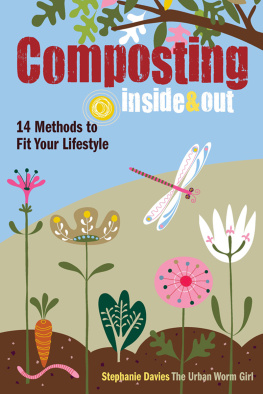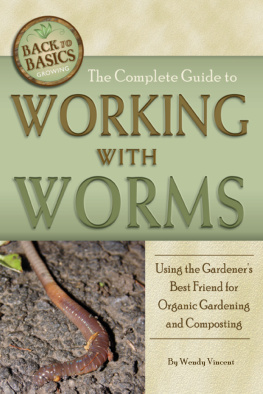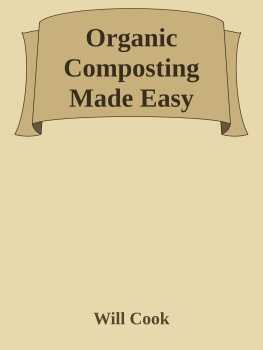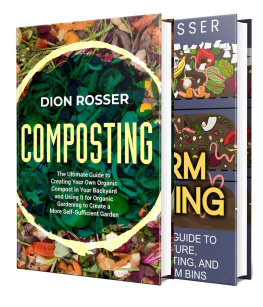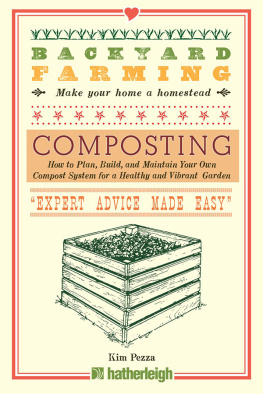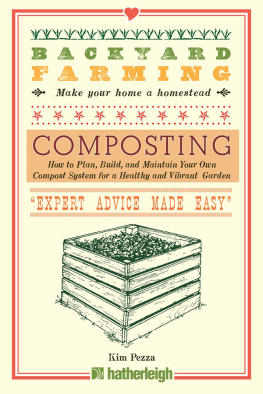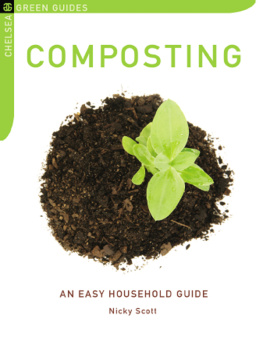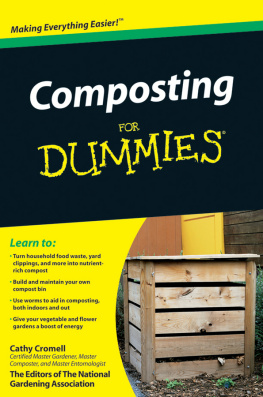Also by David Brian
Basics and Benefits of Worm Composting
Welding Tips & Tricks
Basics and Benefits of Composting
Watch for more at David Brians site.
Basics and Benefits of Worm Composting:
How to start with vermiculture
David Brian
Administrator of RedWormFarms.com
Copyright 2020 by David Brian
All rights reserved.
Table of Contents
F or some years now I have been working on my website RedWormFarms.com (as well as WeldingMachineReview.com and ModelPick.com, my other hobbies apart from the garden) and I very much like writing an article for my sites from time to time.
I enjoy writing about my Garden Babies - the red worms or red wigglers.
It is just incredible how helpful they are for your garden!
During this unfortunate Corona Crisis, I had more time than usual and so I decided to put together some of my experiences in this small ebook that you have bought here. Thank you for that and may you find to love the red worms as much as I do.
David Brian, December 2020
Introduction and Quick Start
T he proverbial win -win situation is worm composting also known as vermiculture . Why?
- It gives you an easy way of disposing of organic waste, such as vegetable peelings.
- It saves landfill space in the county which is good for the environment.
- It provides worms with a happy home, and all the free "eats" they might want.
- The best of all: The homegrown compost is a great way to feed and nurture plants for those who have gardens or even potted plants.
Worm composting, dubbed "the organic garbage disposal" by some advocates, recycles food waste into a rich, dark, earth-smelling soil conditioner. It's such great stuff that Planet Natural offers a variety of organic compost ranging in price from $5.95 to $10.95 as well as compost-containing potting soils. And despite its reputation, worm composting needn't be a smelly effort. If you're careful about setting things upright, your compost bin shouldn't be stinky. Worm composting is increasingly seen as a way of helping our environment and reducing waste. Throughout California, the City of Oakland has a recycling program specifically for food waste. The City of Vancouver in British Columbia, Canada, provides people with worm bins and even has a hotline that you can call to find where to buy worms. Spokane, Washington posts information on how to get started in worm composting to encourage residents to try this eco-friendly garbage disposal.
You need: worms, a container, and a "bedding" to get started.
D o not go out and dig out night-time crawlers who live by your home in the soil to populate your compost bin. Nightcrawlers must tunnel to eat and survive through dirt and cannot live on vegetable waste. Instead, red-worms are needed Eisenia foetida (also known as red wiggler, brandling or manure worm), and Lumbricus rubellus (manure worm). You can buy worms from such places as my website RedWormFarms.com or other specialized sites. Sounds a bit strange but yes it really works, you can order your worms online and they are sent to you by mail. If you have the time and access, you can also find a horse stable and recover worms from horse manure or ask a farmer to ransack his manure pile for worms.
For every pound of food waste per day, Mary Appelh author of "Worms Eat My Garbage" recommends two pounds of worms about 2,000 wigglers . (Some experts recommend a one-to-one ratio one pound of worms per one pound of garbage.) To figure out how much food waste your household generates, monitor it for a week, and divide it by seven. When populating your bin with worms, also keep in mind that worms can double their populations every 90 days, provided you give them adequate food and a good home. It's probably best to start with slightly fewer worms than you need, and just expect your worm population to grow to meet your demand for organic waste processing.
T he worms will also need a jar. On RedWormFarms.com I have on sale a variety of worm bins including the Wormtopia and the Can O Worms. They are reasonably priced at between USD 100 - 130. You could also create your own if you prefer. When it comes to compost size matters. You're going to want a container that's between 8 and 12 inches deep. Wood is a strong building material. If you don't feel like building from scratch, even a "Rubbermaid" type tub can be adapted and turned into a composting bin. Books like "Worms Eat My Garbage" give you details on how to construct your compost bin. Only note that worms like dark, moist (not wet) environments, and they dislike light. Any container should have an opaque character.
Bins can be found from under the sink outside the kitchen, or in your garage. Temperature is one important consideration. Ideally, a worm compost bin should be located in areas between 40 and 80 degrees Fahrenheit. Red worms generally prefer temperatures of between 55 and 77 degrees. If you live in a harsh winter climate, you'll need to push your bin inside during the winter months, or seasonally composting. Another consideration: worms are like humans because they don't like any noise or vibrations. Keep them away from areas of high traffic.


